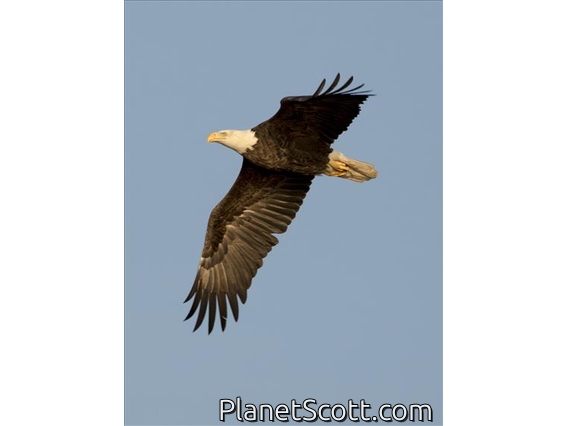Bald Eagle (Haliaeetus leucocephalus)

Bald Eagle (Haliaeetus leucocephalus)

Bald Eagle (Haliaeetus leucocephalus)


×



Bald Eagle (Haliaeetus leucocephalus)

Bald Eagle (Haliaeetus leucocephalus)
About Bald Eagle (Haliaeetus leucocephalus)
- Kingdom: Animals
- Phylum: Chordates
- Class: Birds
- Order: Hawks, Eagles, Kites, and Allies
- Family: Hawks, Eagles, and Kites
The bald eagle is a bird of prey found in North America. A sea eagle, it has two known subspecies and forms a species pair with the white-tailed eagle, which occupies the same niche as the bald eagle in the Palearctic. Its range includes most of Canada and Alaska, all of the contiguous United States, and northern Mexico. It is found near large bodies of open water with an abundant food supply and old-growth trees for nesting.
Source: Wikipedia
Visits
-
-
-
-
2010-01-03
Sacramento National Wildlife Refuge, United States of America -
2010-05-27
Kenai Peninsula, United States of America -
2010-05-29
Saint George Island, United States of AmericaOne seen flying on the south end of the island, but seems that they have bred here in the past. -
2010-05-29
Potter Marsh, United States of America -
2010-06-11
Petersburg - Wrangell Narrows, United States of America -
2010-06-26
Elgin, United States of AmericaNot 100% sure, but very large continuously flapping eagle like bird seen from yard. -
2012-02-18
Elgin, United States of America -
2012-07-08
Necedah NWR, United States of America -
2012-07-12
Yellowstone National Park, United States of America -
2013-07-02
Yolla Bolla Wilderness, United States of America -
2014-02-22
Santa Fe Grade, United States of America -
2014-07-21
Seward, United States of America -
2014-07-22
Kenai Fjords NP--Aialik Bay-Aialik Glacier, United States of America -
-
-
-
-
-
-
-
-
-
-







